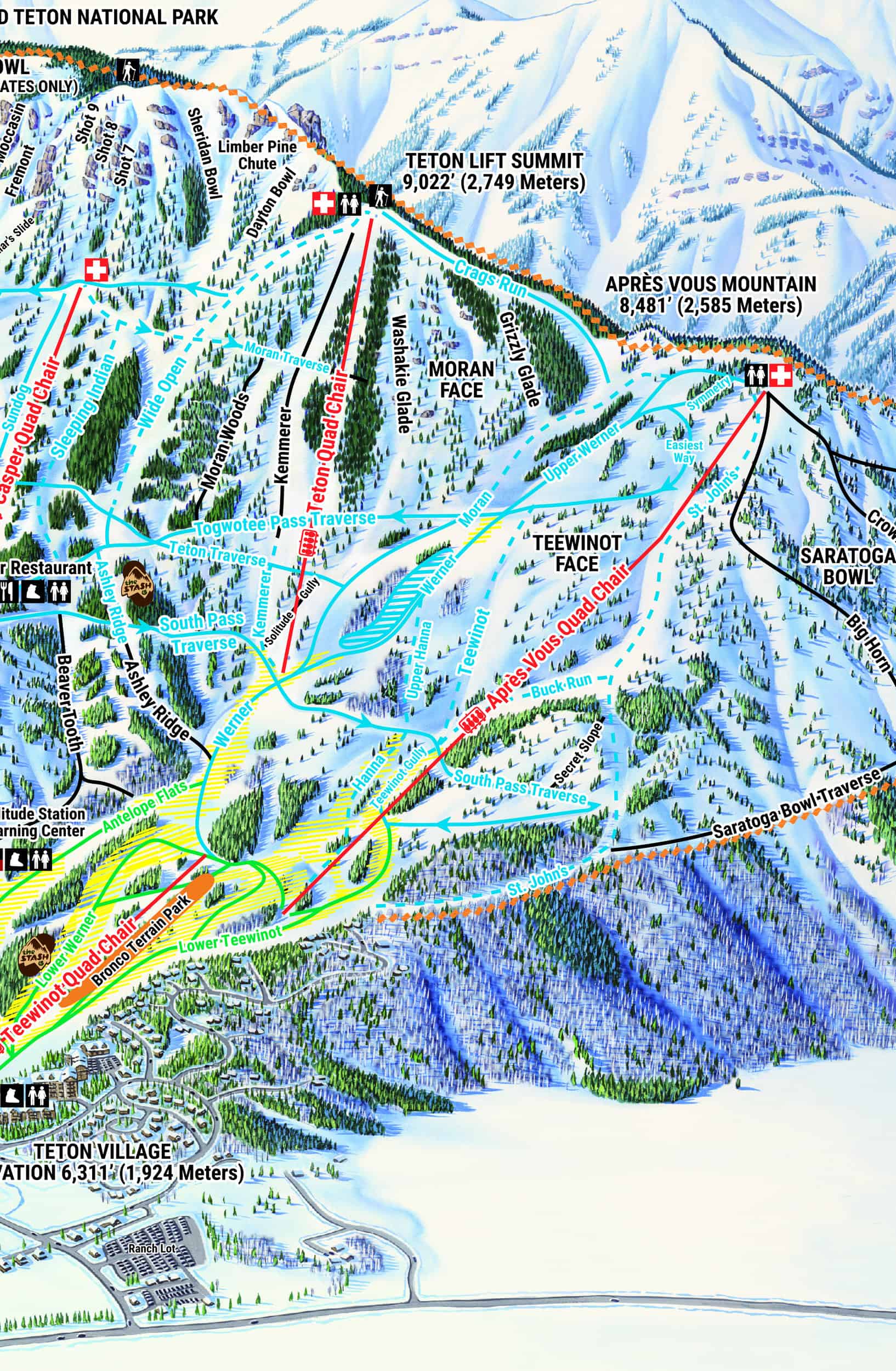Read The
Current Issue
Jackson Hole Downhill
One of the country’s last community downhill ski races returns this year on a course that’s fast, twisty, and open to anyone—skin suit and race skis not required.
// By Mark Baker

It’s fast and formidable, and the fat-baggers like the Jackson Hole Downhill. But anyone who skied it every March will never forget the original course on Snow King, the ski area just five blocks from Jackson’s Town Square. Local and regional racers last flew down the Town Downhill course in 2019. A year later, the race was moved from Snow King to Jackson Hole Mountain Resort and renamed the Jackson Hole Downhill.
The Jackson Hole Ski & Snowboard Club began hosting the Town Downhill—it was one of the club’s major fundraisers—in 1982. A community ski race, the Town Downhill was open to anyone who wanted to race, and categories included Pro, Am, Junior, Snowboard, Telemark, and, more recently, Fat & Baggy. The latter was added to encourage local skiers with limited race experience to join the fun. Racers in that category are required to wear clothing that flaps in the wind—although this isn’t interpreted literally; Fat & Baggy racers are fine as long as they’re not wearing the aero skin suits worn by “real” ski racers—and they race on skis that are at least 86mm underfoot (a typical race ski is usually less than 70mm underfoot). The category also encourages costumes.
“I was really bummed to see it leave Snow King, from a historical standpoint,” says Jason Moore, the race and events manager at JHMR. The race was a fundraiser, though, and participation in it had been declining. Moore says it needed new energy. While there was big buzz about the downhill race moving to Jackson Hole Mountain Resort, the race had a rough start. After weeks of grooming and preparation, the new course, which links several runs on Apres Vous mountain together, was shut down before anyone launched from its starting gate. It didn’t help that it was Friday the 13th—March 13, 2020 to be exact. A day later, the resort closed for the season because of Covid-19. So, it wasn’t until March 2021 that the inaugural Jackson Hole Downhill was held. Although many in the community were sad the Town Downhill ended, the Jackson Hole Downhill still allows the valley to claim that it’s home to one of the last, if not the last, open, non-sanctioned community downhill races in the U.S.
Although 2023 is only the second year of the new race (2022 was canceled after one day because of unsafe conditions), its course is already on its way to being legendary. Like the one at Snow King, it’s fast, but it’s more curvy. Here’s a look at some of the Jackson Hole Downhill’s most notable sections. The course descends 1,371 feet from the top of Teton Lift and, in 2021, the winning pro racers finished in about 51 seconds. (The Fat & Baggy winner finished in 58 seconds.)
The third annual Jackson Hole Downhill is March 10, 2023.





